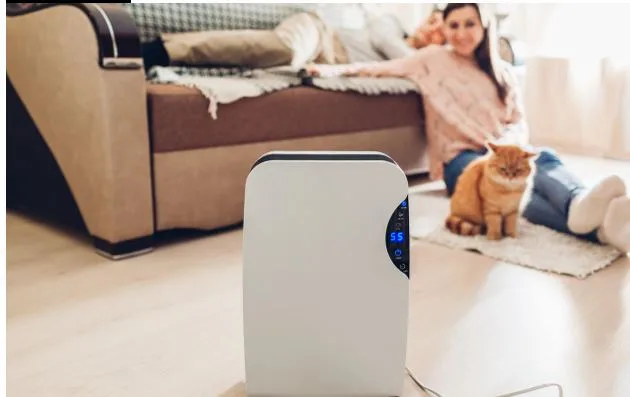Maintaining a dehumidifier is essential to ensure it runs efficiently and lasts longer. Proper care can prevent it from malfunctioning and keep your home’s air quality at its best. You may have the budget to buy dehumidifier units, but do you know how to keep them in tip-top condition?
1. Clean the Filter Regularly
The filter in a dehumidifier traps dust and other particles, preventing them from circulating in the air. A clogged filter can reduce efficiency and strain the device.
- Check the filter monthly – Inspect the filter at least once a month. If it’s dirty, clean it according to the manufacturer’s instructions.
- Wash or replace as needed – Some filters are washable, while others need replacement. Follow the guidelines for your specific model.
2. Empty and Clean the Water Collection Tank
Give regular attention to the water collection tank to prevent bacteria and mould growth. If it’s overflowing, the dehumidifier might shut off.
- Empty the tank daily – During periods of high humidity, empty the tank daily to prevent overflow.
- Clean the tank weekly – Use mild soap and warm water to clean the tank weekly. This helps prevent any buildup of bacteria and mould.
3. Inspect and Clean the Coils
The coils in a dehumidifier can gather dust and dirt over time, affecting efficiency. Keep them clean to ensure optimal performance. First, turn off and unplug the dehumidifier. Using a soft brush or cloth, gently clean the coils to remove dust and debris. Be careful not to damage the coils.
4. Ensure Proper Airflow
Good airflow is essential for a dehumidifier to function correctly. Note that blocked vents or restricted airflow can reduce efficiency and increase wear.
- Check the placement – Position the dehumidifier in a spot where air can circulate freely. Avoid placing it too close to walls or furniture.
- Keep vents clear – Regularly check and clear any obstructions from the air intake and exhaust vents.
5. Monitor Humidity Levels
Using a hygrometer to monitor humidity levels can help you adjust the dehumidifier settings for optimal performance. This can also prevent the unit from overworking.
Most dehumidifiers have adjustable settings. Set it to maintain a comfortable humidity level, typically between 40% and 60%. If the humidity levels fluctuate, adjust the settings accordingly to maintain consistent air quality.
6. Schedule Professional Servicing
While regular maintenance can keep your dehumidifier running smoothly, professional servicing can ensure all components are in good working order. It’s good practice to schedule a professional service once a year. If the dehumidifier shows signs of malfunction, such as unusual noises or reduced performance, seek professional help immediately.
7. Use a Timer
Using a timer can help manage the dehumidifier’s operating hours, especially during periods of fluctuating humidity. This can save energy and reduce wear.
- Set operating hours – Program the timer to run the dehumidifier during peak humidity periods, such as early morning and evening.
- Avoid continuous operation – Continuous operation can wear out the dehumidifier faster. Use the timer to give the unit rest periods.
Optimise Your Dehumidifier for Longevity
Ensuring your dehumidifier runs smoothly involves consistent care and mindful usage. You’d want it to maintain the quality of air in your home for years to come. And when you need a new one, go for top brands like Mitsubishi Electric. This way, you’re already taking a step towards dehumidifier longevity.
